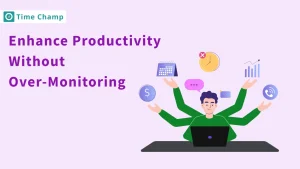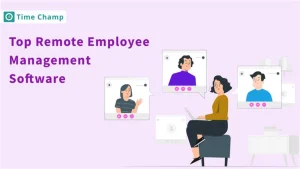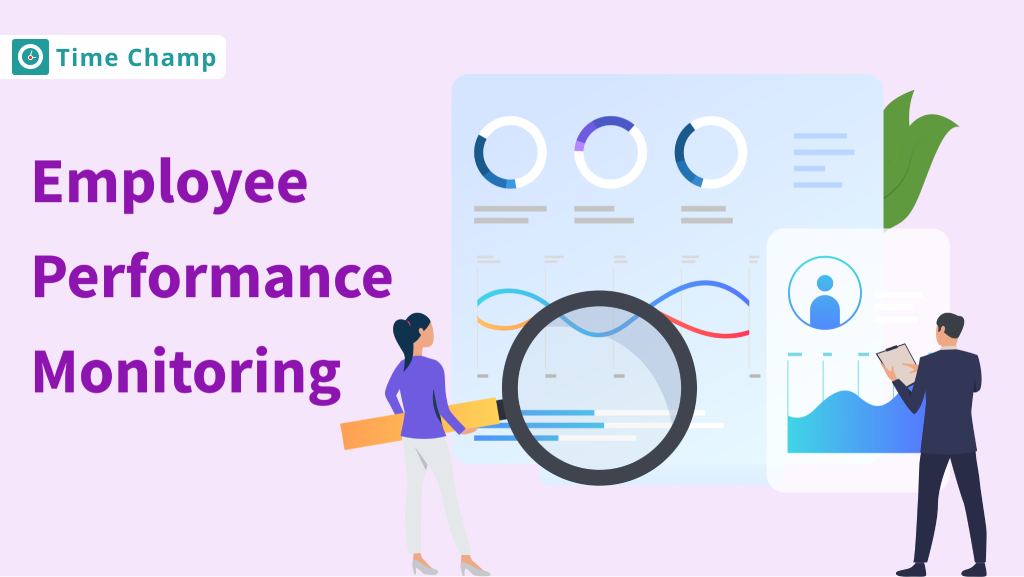Do you often get annoyed by the lack of clarity regarding the use of software by your team? Think about being able to get updates on the productivity of each app in your work process. Introducing Application Usage Tracking, a tool that will help you clear up your business and make decision-making a breeze. Let’s explore the concept of software usage tracking and how it can revolutionize the way your organization operates.
What is Application Usage Tracking?
Application tracking is defined as the process of tracking and logging the usage of software applications by users or within an organization. This tracking includes aspects like how often the application is used, how long it is used, which features are used, and how the users interact with the application.
Thus, the analysis of such data will allow organizations to understand how software applications are used, what trends exist in their usage, how to adjust licensing costs, enhance the usage rates of applications, and make decisions on the management of applications and resources.
How Does Application Usage Tracking Software Work?
Application usage tracking software typically works by monitoring and recording various activities related to the use of applications on a user’s device. Here are some typical aspects of how this software works:
Installation and Configuration
The software is installed at the workstation level, on servers, or on a network based on the organization’s structure. This can be done through direct installation of the devices or installation tools available in the market. Once installed, the software is set to monitor specific apps, tasks, or kinds of activities. It is possible to define which data should be collected, for example, active time of the application, idle time, keystrokes, mouse movements,and other specific application data.
Data Collection
-
Activity Monitoring: It is a background application that tracks the usage of applications based on how often, how long, and how intensely the employees are used.
-
URLs Visited: Supervising the use of the internet to prevent employees from engaging in activities prohibited by the company policies.
-
Screenshots and Logs: Some of the tracking software can take screenshots at a specific time interval or all the activity of the user, which is also helpful apart from the data received.
Data Transmission and Storage
The collected data is usually sent in real-time or at some fixed time to a central server or cloud-based system for storage. This transmission can be encrypted to ensure that any information being transmitted is secure. The data is usually in a structured form and is usually stored in databases that can be easily queried. Storage solutions are built to protect data, secure it, and meet the requirements of the current data protection laws.
Data Analysis and Reporting
Aggregation and Processing: The software compiles the data that has been gathered and analyzes it to produce useful information. This involves the classification of activities, measurement of usage, and analysis of trends.
Dashboard and Reports: The data is easily accessible through user-friendly interfaces and the administrators can create different reports. These reports can include:
-
Usage Summaries: Summaries of time spent by employees on various applications.
-
Productivity Analysis: Knowledge of productive and non-productive time.
-
Compliance Reports: Compliance with using the software policies and regulations through documentation.
Alerts and Notifications
Setting up the software to notify the user, or a designated recipient, of certain events is possible. For instance, the administrator can be notified when prohibited applications are run, when idle time is too long, or when productivity levels are not achieved. Some systems provide alerts for immediate action to be taken, for instance, unauthorized use of software or possible security threats.
Benefits of Application Usage Tracking
What if you could unleash the power of your applications? In what ways does the analysis of user interactions contribute to the improvement of productivity and the making of sound decisions? In this section, we discuss how application tracking can improve the company and how it helps achieve its goals.
Improves Productivity
This tracking software assists organizations in tracking the time that employees spend on various applications. This way, businesses can determine which applications are beneficial to productivity and which applications are disruptive. For instance, if employees are slacking on social media or other unrelated sites, managers can intervene and correct the situation. Furthermore, the identification of the most utilized productive tools can help in improving the training and assistance provided to the workers, thus improving general efficiency.
Resource Optimization
The knowledge of the actual application usage helps to manage organizational resources more effectively. If specific software is not being used as much, then these resources can be better utilized in other areas of the business. Let’s say, a costly design software license may be used by a few employees, which means that a company could save costs by either limiting the number of licenses or opting for a cheaper solution. This helps to avoid situations when a lot of money is spent on software and tools that are not used at all or used very sparingly.
Time Management
It gives information on how the employees spend their time on the different tasks and applications. This information can be useful for the employees and managers to identify the time-consuming activities and enhance the time utilization. Employees can observe how much time they spend on various activities which can be optimized. This data can be used by managers to give feedback and work on improving time management for the team.
Enhances Security
This is important in ensuring that data is protected and that there is no possibility of a breach occurring. For instance, if an employee is using unauthorized file-sharing applications, this could be a security concern. The tracking software can help IT departments to be aware of such activities so that they can act accordingly. Also, it guarantees that employees follow security policies and run only authorized applications to minimize cyber threats.
Compliance and Auditing
It is always important to adhere to organizational policies and the law as a company. This software gives detailed records of the usage of the software and hence can be used for auditing and reporting. This is especially the case for heavily regulated industries such as financial or healthcare. The application usage tracking software also ensures that the employees are using the applications allowed by the company, and this can be used to show compliance during the audits, hence minimizing legal problems and penalties.
Challenges in Implementing Application Usage Tracking
‘Without data, you’re just another person with an opinion’– W. Edwards Deming. Nevertheless, there is a lot of truth in this statement, and many organizations experience significant difficulties when it comes to the effective implementation of application usage tracking. Let’s discuss these challenges.
Employee Privacy Concerns
It is the issue of privacy violations that employees have, especially when the company is using technology to monitor them. Employees may not like the idea of being monitored, because it will look like invasion of employee privacy or that the employer is trying to control them too much. Managers must explain the reasons for monitoring, how the data collected will be used, and that the goal of monitoring is to enhance organizational performance and not control subordinates.
Technical Implementation
One of the main issues is the compatibility of the tracking software with the existing IT systems and processes. There may be issues of compatibility with the operating systems, software versions, and hardware that may require IT skills and tools. There should be no interruption of the organization’s normal operations during implementation.
Data Security Risks
Monitoring software gathers personal information about employees’ actions and application usage. This data must be protected from access, data theft, and cyber threats, and employers must ensure that security measures are in place. This entails security issues such as encryption, storage, and access control to only those permitted to access the information.
Managing Data Overload
Application usage tracking software produces a significant amount of information on application usage. Managers require efficient data filtering, analysis, and interpretation techniques to make sense of this data in their organizations. If not well managed, the data can be overwhelming and not easily used to enhance productivity and decision-making.
How to Choose the Right Application Usage Tracking Software?
Want to know how your employees are using applications? Choosing the right software can reveal the answers. Here’s how to find the perfect tool for your needs.
Define your Objectives
When choosing an application usage tracking software, it is important to consider objectives. Decide your goals when using the tracking software, whether it is to increase productivity, security, efficiency of resources, or get more information about users. Understanding your goals will assist you in making the right decision on which tool to use.
Key Features and Capabilities
-
Real-time Monitoring: The software should be real-time. This provides immediate insights. It enables fast detection of issues and threats. You can respond quickly, boosting performance.
-
Detailed Reporting: This provides detailed information about usage, effectiveness, and user activity, which helps to determine the most frequently used functions and potential problems. This approach helps in decision-making and the development of features that are most used by the users.
-
Customizable Dashboards: It enables the user to select the type of data and information to be displayed, in the form of a graphical representation of the KPIs. This flexibility allows the stakeholders to focus on the relevant data, thus improving their capacity to track performance and make decisions in the shortest time possible.
-
Scalability: Another important aspect is the ability to scale, meaning the ability to handle more users and data without slowing down. It guarantees efficiency as organizations evolve, develop, and incorporate new attributes and processes, thus sustainability and adaptability.
User-Friendly Interface
User-friendly interfaces make it easier for your team to use. It should be easy to use, intuitively designed, and have clear instructions. A well-designed interface will save users time and reduce their learning curve.
Customization and Flexibility
It is important to be able to modify the software according to your needs. Look for software that allows you to set up tracking parameters, set up certain notifications, and create individual reports. Flexibility implies that the software can be customized to your requirements and can change with your requirements.
Vendor Reputation and Customer Service
Look at the experience of the provider and the level of assistance they provide. To evaluate the reliability of the provider and the level of satisfaction of the customers, one should pay attention to the feedback, cases, and testimonials. Evaluate the provider’s documentation, guides, customer support, and help desk to see if you will get the needed help.
Cost and Budget
Think about the price of the software and what it will mean for your budget. Pricing strategies can be different, and they can be based on subscription, one-time payment, or usage. Consider the cost of the software and other expenses that may be associated with the maintenance, upgrades, and connections.
Time Champ for Application Usage Tracking
Time Champ is a highly effective application usage tracking software that has been developed to be very effective with many features. It enables monitoring of application usage in real-time, which can give an organization useful information about employee actions, application efficiency, and usage trends. Time Champ’s dashboards enable users to design the displays to highlight specific measures, which improves tracking and decision-making.
In addition, Time Champ has good compatibility features that enable it to blend well with other IT systems and other software applications. This makes it possible for it to expand with organizations meaning that it can accommodate large amounts of data without slowing down. Security features such as high encryption and access control make data safe, which makes Time Champ a suitable solution for improving the performance of employees and the efficiency of the organization.
Conclusion
Thus, application usage tracking is a critical method that helps businesses understand users’ behaviour, improve their productivity and develop their businesses. Through tracking, firms can increase the level of satisfaction, segment customers, and increase profitability in the current market environment. The adoption of application usage tracking results in enhanced productivity, customer satisfaction, and organizational success across various industries.
Ready to optimize your business with application usage tracking
Try Time Champ today to transform your organization's efficiency and productivity!
Signup for FreeBook Demo




